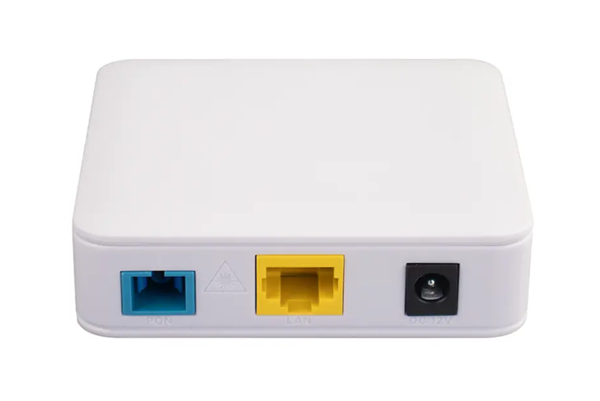Have you ever complained to yourself, "This is a terrible network," when your internet connection is slow? Today, we're going to talk about Passive Optical Network (PON). It's not the "bad" network you think of, but the superhero family of the network world: PON.
1. PON, the "Superhero" of the Network World
PON refers to a fiber optic network that uses a point-to-multipoint topology and optical splitters to transmit data from a single transmission point to multiple user endpoints. It consists of an optical line terminal (OLT), an optical network unit (ONU), and an optical distribution network (ODN). PON utilizes an entirely passive optical access network and is a P2MP (Point to Multiple Point) optical access system. It offers advantages such as conserving fiber resources, requiring no power for the ODN, facilitating user access, and supporting multi-service access. It is a broadband fiber optic access technology currently being actively promoted by operators.
PON is like the "Ant-Man" of the networking world: compact yet incredibly powerful. It utilizes optical fiber as the transmission medium and distributes optical signals from the central office to multiple user endpoints through passive devices, enabling high-speed, efficient, and low-cost broadband access services.
Imagine if the network world had a superhero, PON would definitely be the understated Superman. It does not require power and can "fly" in the online world, bringing light-speed Internet experience to thousands of households.


2. PON's Core Advantages
One of PON's "superpowers" is its light-speed transmission. Compared to traditional copper-wire networks, PON uses optical fiber, resulting in blazingly fast transmission speeds.
Imagine downloading a movie at home, and it instantly appears on your device like magic. Furthermore, optical fiber is resistant to lightning strikes and electromagnetic interference, and its stability is unmatched.
3. GPON & EPON
The two most well-known members of the PON technology family are GPON and EPON.
GPON: The Power of the PON Family GPON, standing for Gigabit-Capable Passive Optical Network, is the powerhouse of the PON family. With downlink speeds of up to 2.5 Gbps and uplink speeds of 1.25 Gbps, it provides high-speed, high-capacity data, voice, and video services to homes and businesses. Imagine downloading a movie at home. GPON allows you to experience instant downloads.Moreover, the asymmetric characteristics of GPON are more adaptable to the broadband data service market.
EPON: The Speed Star of the PON Family EPON, short for Ethernet Passive Optical Network, is the speed star of the PON family. With symmetrical 1.25 Gbps upstream and downstream speeds, it perfectly supports users with large data upload needs. EPON's symmetry makes it an ideal choice for businesses and content creators with large upload requirements.
GPON and EPON are both PON technologies, differing primarily in technical specifications, transmission rates, frame structures, and encapsulation methods. GPON and EPON each have their own advantages, and the choice depends on specific application requirements, cost budget, and network planning.
With technological advancements, the differences between the two are narrowing. New technologies, such as XG-PON (10-Gigabit-Capable Passive Optical Network) and XGS-PON (10-Gigabit-Capable Symmetric Passive Optical Network), offer higher speeds and improved performance.
Applications of PON Technology
PON technology has a wide range of applications:
Home broadband access: Provides high-speed internet services to home users, supporting high-definition video streaming, online gaming, and more.
Enterprise networks: Provide businesses with stable network connections, supporting large-scale data transmission and cloud computing services.PON is a shrewd "smart butler." Because it's passive, maintenance costs are significantly reduced. Operators no longer need to install and maintain power equipment for each user, saving a considerable amount of money. Furthermore, PON network upgrades are extremely convenient. No excavation is required; simply upgrading equipment at the central node will refresh the entire network.
Smart cities: In smart city construction, PON technology can connect various sensors and monitoring equipment, enabling intelligent transportation, smart lighting, and other technologies.
Media Contact
Company Name: Hangzhou Softel Optic Co., Ltd.
Email: Send Email
Phone: +86 571 8898 9381
Address:708-709 Haiwei Building, Binjiang District
City: Hangzhou
Country: China
Website: https://www.softeloptic.com/
